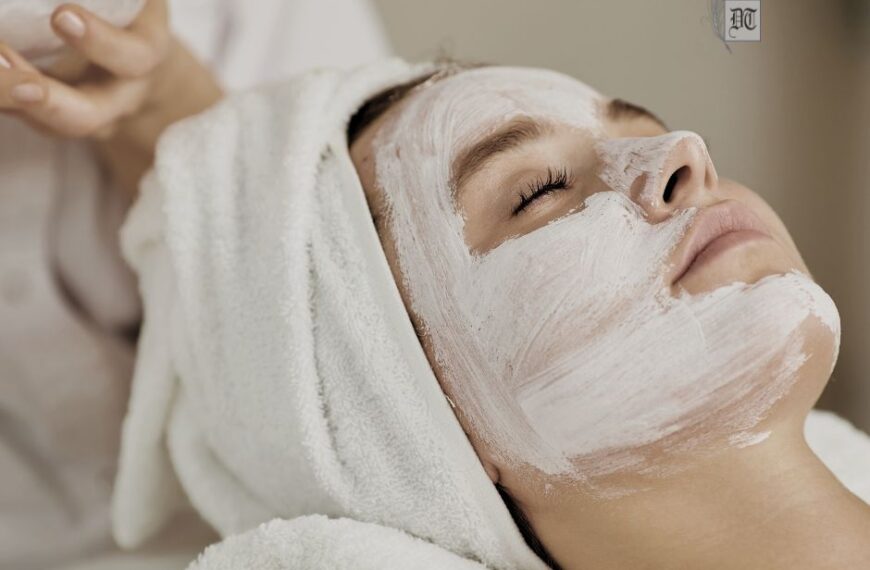If your smile is crooked, you are a great candidate for receiving braces, no matter if you are a child, teenager or an adult. Straightening your smile is one of the best ways to boost your confidence. Fashionista Shameena tells us about the types of braces, in the third part of the four-part article, in the weekly column, exclusively in Different Truths.
Do you love the smile you have? Is it a straight smile or is it crooked? Many patients seek orthodontic care because their smile is crooked or could use some improvement. Orthodontic care makes a huge difference when it comes to straightening your smile quickly and doing it correctly. Only an orthodontist has received the education needed to straighten your smile the best way possible. An orthodontist spends about 10-11 years in training and schooling to do orthodontics. That generally includes four years of undergraduate work, four years of dental school and an additional two-three years training in orthodontics. These professionals truly know what they are doing when they make a plan for your teeth.
If your smile is crooked, you are a great candidate for receiving braces, no matter if you are a child, teenager or an adult. Straightening your smile is one of the best ways to boost your confidence. Investing in a straighter smile can really help you go places in life!
Braces is an investment: an investment in your money and an investment in your time. It’s always  important to look at factors that determine whether you need braces or not, as you will have braces for about 18 months or so of your life. However, if you do make the choice to receive braces, you can be sure that you are making an incredible investment for your future and for your health. What are factors to consider when deciding if you need braces? Some factors include the status of your smile, your age, health reasons and bite and alignment problems.
important to look at factors that determine whether you need braces or not, as you will have braces for about 18 months or so of your life. However, if you do make the choice to receive braces, you can be sure that you are making an incredible investment for your future and for your health. What are factors to consider when deciding if you need braces? Some factors include the status of your smile, your age, health reasons and bite and alignment problems.
Braces have come a long way in recent years. No longer are traditional metal braces your only option for receiving orthodontic care. You can choose:
Traditional Metal Braces
Metal braces are also known as “traditional” braces. Why? They’ve been around for decades and have proven time and time again that they work. Years ago they became the go-to option for orthodontic care and have stood the test of time. There have been tweaks here and there to make metal braces more modern, but overall, not much has changed. They are still the most popular option for braces among teenagers and the most economical choice for orthodontic care. Dress these brackets up with colourful bands at every orthodontic appointment!
 Metal braces consist of metal square brackets that are attached to the centre of each tooth with a special type of bonding glue. This glue is strong enough that the brackets stay bonded to your teeth, but also versatile enough that the glue can be removed once treatment has come to an end. Metal braces have a thin wire that connects and goes through each bracket on the upper and lower jaw. In total, you will have two wires. These are known as “archwires” and they create an arch in your mouth that follows the natural curve of the jaw. Over time, these archwires will move the teeth into proper place so that they make the perfect, straight arch on the upper and lower jaw.
Metal braces consist of metal square brackets that are attached to the centre of each tooth with a special type of bonding glue. This glue is strong enough that the brackets stay bonded to your teeth, but also versatile enough that the glue can be removed once treatment has come to an end. Metal braces have a thin wire that connects and goes through each bracket on the upper and lower jaw. In total, you will have two wires. These are known as “archwires” and they create an arch in your mouth that follows the natural curve of the jaw. Over time, these archwires will move the teeth into proper place so that they make the perfect, straight arch on the upper and lower jaw.
Incognito Lingual Braces
Want the strength of metal braces without having a visible mouth full of metal? It is common for some adults and teenagers to avoid orthodontic treatment because they find metal braces to be unattractive or distracting.
With lingual braces, you can achieve the same results as traditional braces with a hidden treatment  apparatus on the tongue-side of your teeth (by the tongue and palate). This is why they are referred to as “incognito” braces — they stay hidden (or incognito) as you straighten. The dentist will take an impression of your teeth and make customized brackets fit perfectly to you. Lingual braces work much like traditional metal braces by slowly shifting the teeth into proper alignment. Unlike metal braces, each tooth must have its own brackets and wires, as the lingual braces are shaped to each tooth back. Special training and technical expertise are needed to install these braces, and they do cost a bit more than traditional metal braces. However, you receive the trade-off of these braces being so undetectable.
apparatus on the tongue-side of your teeth (by the tongue and palate). This is why they are referred to as “incognito” braces — they stay hidden (or incognito) as you straighten. The dentist will take an impression of your teeth and make customized brackets fit perfectly to you. Lingual braces work much like traditional metal braces by slowly shifting the teeth into proper alignment. Unlike metal braces, each tooth must have its own brackets and wires, as the lingual braces are shaped to each tooth back. Special training and technical expertise are needed to install these braces, and they do cost a bit more than traditional metal braces. However, you receive the trade-off of these braces being so undetectable.
Ceramic Braces
Ceramic braces have brackets made of ceramic or porcelain, or in some cases plastic. The brackets can be clear or else coloured to be the same colour as your teeth. Thus, they usually blend in with your teeth much better than metal braces. (People with lighter teeth do fine with clear brackets, but if you have darker teeth, having coloured braces might be a better option).
It used to be that only the brackets for these braces were ceramic, while the wire itself was made of metal. These days clear wires are available as well, making these braces even less visible.
These days clear wires are available as well, making these braces even less visible.
Metal braces are known for their durability. While ceramic braces are tough, they are made from a different material. Unlike metal, this material can chip or crack. So, if you play rough sports or engage in other activities where contact is made with your jaw or mouth, you might want to consider going with traditional braces to avoid costly repairs.
Some people claim that the ceramic material irritates their inner lips. This could be due to the interaction of the material with their mouths, or due to the fact that ceramic brackets tend to be bigger than traditional ones. While such discomfort is rare, it might be a factor if you have a sensitive mouth.
Traditional metal braces can tolerate more pressure than newer ceramic ones. Thus, metal braces are recommended for more severe correction. Ceramic braces can also take more time to align your teeth since adjustments have to be slightly smaller.
That said, both types of braces work on the same principles and are equally as effective for most cases.
Many articles on the internet mention staining as an issue with ceramic braces. The original ceramic braces did tend to stain (especially if they were made with a cheaper plastic). The ceramic braces of today do not have this problem.
However, the wire on braces is normally held in place with little rubber bands called ligatures. These are used for both metal braces and ceramic braces. These ligatures can stain, especially if you smoke, or drink beverages that typically stain teeth (coffee, wine, tea, etc.)
(To be continued)
Shameena Abdurahiman
Photos by the author from the Internet
#Braces #BeautifulSmile #OralHealth #TypesOfBraces #TeethCorrection #Beauty #FashionFunda #DifferentTruths



 By
By
 By
By
 By
By